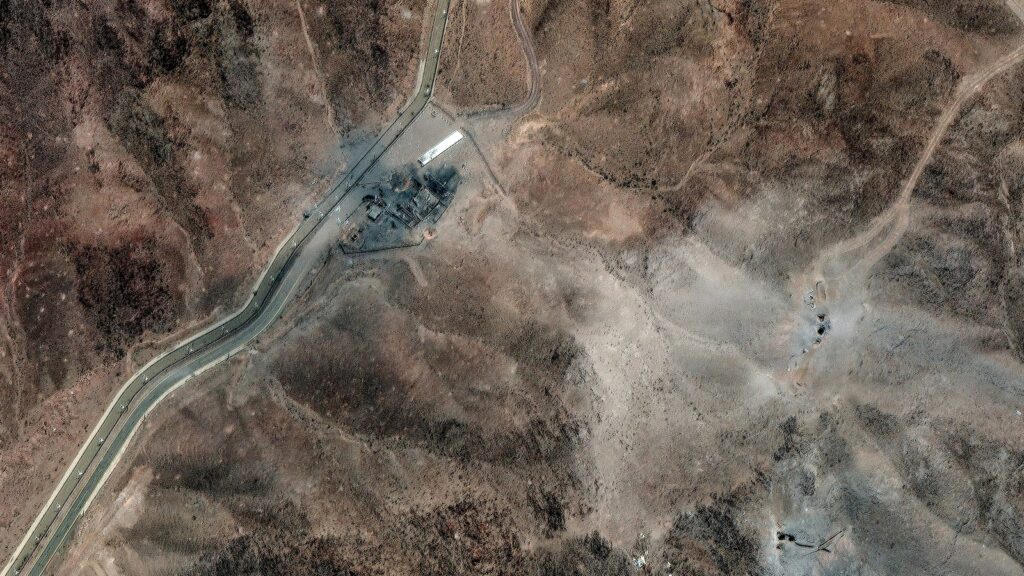
Hackers aligned with Iran have launched cyberattacks against U.S. banks, defense contractors, and oil industry companies in the wake of American strikes on Iranian nuclear facilities. The attacks, which have not yet caused significant disruptions, come amid heightened tensions following the military action.
This Tuesday, June 24, 2025, satellite imagery from Maxar Technologies revealed substantial damage at Iran’s Fordo enrichment facility, a result of the U.S. strikes conducted on June 23. The images underscore the physical impact of the conflict, while the digital repercussions continue to unfold.
Escalating Cyber Threats
The recent cyberattacks have not yet led to widespread disruption of critical U.S. infrastructure, but experts warn that the situation could escalate if the fragile ceasefire between Iran and Israel collapses. Independent hacking groups sympathetic to Iran have vowed to intensify their digital offensives against the United States.
Arnie Bellini, a tech entrepreneur and investor, suggests that the U.S. strikes might prompt Iran, along with allies like Russia, China, and North Korea, to increase investments in cyberwarfare. Bellini emphasizes the cost-effectiveness of hacking operations compared to traditional military engagements, stating, “We are wide open digitally. We are like Swiss cheese.”
Pro-Palestinian Groups Join the Fray
Two pro-Palestinian hacking groups have claimed responsibility for targeting over a dozen aviation firms, banks, and oil companies following the U.S. strikes. These groups, using platforms like Telegram, have encouraged others to join their cause, according to SITE Intelligence Group researchers.
The attacks primarily involved denial-of-service tactics aimed at disrupting online networks. One group, known as Mysterious Team, declared on Monday,
“We increase attacks from today.”
U.S. Preparedness and Response
Federal authorities remain vigilant, anticipating further cyber incursions. The Department of Homeland Security issued a bulletin warning of increased Iranian cyber threats, while the Cybersecurity and Infrastructure Security Agency (CISA) urged critical infrastructure operators to stay alert.
Despite lacking the technical prowess of China or Russia, Iran is recognized as a “chaos agent” in the cyber realm, often leveraging attacks to steal secrets or intimidate adversaries. While official Iranian cyber operations may pause if the ceasefire holds, independent groups could continue retaliatory actions.
Historical Context and Ongoing Risks
Iran’s cyber capabilities, though limited, have been a persistent challenge for U.S. security. Last year, federal charges were brought against three Iranian operatives accused of attempting to hack former President Donald Trump’s campaign. Jake Williams, a former National Security Agency expert, notes that Iran is likely to continue intelligence-gathering efforts to anticipate U.S. or Israeli actions.
Williams asserts,
“It’s fairly certain that these limited resources are being used for intelligence collection to understand what Israel or the U.S. might be planning next.”
Implications for U.S. Cybersecurity
The current situation highlights the need for robust digital defenses. However, the Trump administration’s budget cuts to cybersecurity programs, including election security, have raised concerns. The recent dismissal of Gen. Timothy Haugh, who led the NSA and Cyber Command, further complicates the U.S. response strategy.
Experts like Ziv Mador from Trustwave’s SpiderLabs emphasize the importance of cybersecurity investments, citing Israel’s sophisticated cyber espionage capabilities as a model. Mador points out that such capabilities were crucial in Israel’s recent operations against Iran.
Arnie Bellini stresses the urgency of enhancing America’s cyber defenses through education and technical improvements. He recently contributed $40 million to establish a cybersecurity center at the University of South Florida, underscoring the need for a new arms race in cyberwarfare.
Bellini concludes with a stark warning: “It’s Wile E. Coyote vs. the Road Runner. It will go back and forth, and it will never end.”







